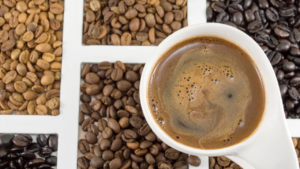Introduction:
Coffee isn’t just a beverage; it’s a versatile culinary ingredient that can complement a wide range of flavors and foods. Just as with wine or beer, the art of coffee pairing involves finding the perfect match between your brew and your meal to enhance both the taste of the coffee and the food. In this article, we’ll explore the principles of coffee pairing and provide tips for creating harmonious flavor combinations that will elevate your dining experience.
Understanding Flavor Profiles:
Before diving into coffee pairing, it’s essential to understand the flavor profile of your coffee. Coffee beans can have a diverse range of flavors, from fruity and floral to nutty and chocolatey, depending on factors such as origin, roast level, and processing method. Similarly, different brewing methods can extract distinct flavors and aromas from the coffee grounds. By understanding the unique characteristics of your coffee, you can better match it with complementary flavors in food.
Consider the Intensity:
When pairing coffee with food, consider the intensity of both the coffee and the dish. A bold and full-bodied coffee, such as a dark roast espresso, may pair well with rich and savory foods like chocolate desserts or grilled meats. In contrast, a lighter and more delicate coffee, such as a fruity Ethiopian pour-over, may be better suited to lighter fare such as salads, seafood, or fresh fruit.
Contrast and Balance:
When pairing coffee with food, aim to create a balance of flavors and textures that complement and enhance each other. For example, the acidity of a bright and citrusy coffee can help cut through the richness of a creamy dessert, while the sweetness of a caramelized coffee can add depth and complexity to a savory dish. Experiment with contrasting and complementary flavors to find unexpected pairings that surprise and delight your taste buds.
Experiment with Brewing Methods:
Different brewing methods can extract different flavor profiles from the same coffee beans, offering endless possibilities for pairing with food. For example, a French press brew may highlight the earthy and chocolatey notes of a coffee, while a pour-over brew may emphasize its floral and fruity undertones. Experiment with various brewing methods to discover how each one enhances the flavors of your coffee and complements different types of cuisine.
Pairing Coffee with Desserts:
Coffee and desserts are a classic pairing, with the bitterness of coffee balancing the sweetness of cakes, pastries, and chocolates. When pairing coffee with desserts, consider the flavors and textures of both the coffee and the dessert. For example, a creamy cheesecake may pair well with a smooth and velvety espresso, while a tart fruit pie may be complemented by a bright and fruity pour-over.
Conclusion:
Coffee pairing is a delightful way to explore the diverse world of flavors and elevate your culinary experience. By understanding the flavor profile of your coffee, considering the intensity and characteristics of both the coffee and the food, and experimenting with different brewing methods, you can create harmonious flavor combinations that enhance the enjoyment of both your coffee and your meal. So the next time you sit down to enjoy a cup of coffee, why not pair it with your favorite dish and savor the magic of flavor synergy?





